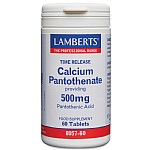A-Z guide of vitamins – part 1
Vitamin A (also known as Retinol and Beta carotene can be converted into vitamin A in the liver, kidneys and intestinal mucosa).

This vitamin is used for normal vision, immunity and reproduction. It also aids kidneys, lung and heart function.
Good sources of vitamin A are mango, cod liver oil, apricots, broccoli, dairy produce, peas, green beans and eggs.
Vitamin B1 (also known as Thiamin)
This vitamin cannot be made in the body, so we rely solely on dietary sources. Owing to the fact it is water soluble and not stored in the body, a deficiency can arise due to poor diet. For this reason, it is often added to flour. This is often depleted in patients on long term diuretics. It is also used in alcoholism.
The body uses Thiamin to release energy from carbohydrates.
The body uses Thiamin to release energy from carbohydrates and aids the production of acetylcholine (a vital compound of the nervous system).
Good dietary sources are cereals, gammon and pork, sirloin steak and bagels.
Vitamin B2 (also known as Riboflavin)

This is a water soluble vitamin that must be obtained from the diet. A deficiency will often result in cracks/sores in the corners of the mouth and/or watery or burning, itching eyes. It is important for the repair and maintenance of soft tissues and the production of red blood cells.
It also supports the body in the production of the thyroid hormone and the maintenance of healthy eyes.
Good dietary sources of vitamin B2 are lamb’s liver, Shreddies, wild rice, whole wheat pasta, soya milk, Weetabix and muesli.
Vitamin B3 (also known as Niacin)

Another water soluble B vitamin and is most abundant in high protein foods.
It is needed for over 50 metabolic reactions, most importantly to release energy from macronutrients.
Good dietary sources of Niacin are lamb’s liver, tuna (in brine), skinless chicken legs, fish, pork, mackerel and peanuts.
Vitamin B5 (also known as Pantothenic Acid)

A vitamin used for the production of antibodies and is essential for the production of cortisone which helps us cope with stress. It is often recommended as a supplement for those with demanding lifestyles. Good dietary sources are peanuts, avocados, pecans, hazelnuts, mushroom, dark chicken meat, salmon and sunflower seeds.
Vitamin B6

This is a group of 3 water soluble compounds, probably involved in more processes in the body than any other B vitamin. It is often used by women as a premenstrual supplement as there is some evidence that it may well assist in essential fatty acid metabolism and fluid balance.
Good dietary sources of vitamin B6 are muesli, bran flakes, sunflower seeds, lentils, all bran, cornflakes, potatoes and white fish.
Biotin

This is primarily used to assist with normal growth and development of the skin, hair, nerves and bone marrow.
Good dietary sources of biotin are egg yolks, almonds, cauliflower, mushrooms, sweet potato and spinach.
Folic Acid

This is essential for cell multiplication and critical in DNA and RNA formation, hence its need for foetal development to allow proper development of the neural tubes.
Good dietary sources are raw spinach, potatoes, raw chicory, muesli, brussel sprouts, chickpeas, bran flakes and asparagus.
Vitamin B12

This principally participates in the rapid generation of bone marrow and red blood cells and is necessary for myelin sheath production and for a healthy cardiovascular system.
Good dietary sources are mackerel fillets, canned pilchards and sardines, crab, tuna, sea bass and steak.


